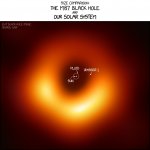But it looks like a round, non-light emitting object eclipsing a light source. Somebody could have shot a pic of a planet in front of a star and it seems like it could look the same.
On Earth, we get total eclipses, because the Moon is just the right size, and just the right distance, to make that happen. The angular size of the Moon happens to match the angular size of the Sun. It is a coincidence, and happens pretty much nowhere else.
Now, look at another star. The star and its planets would be roughly the same distance from Earth (like, Alpha Centauri is about 4 light years away, so its planets are about 4 light years away). That means, to give us a total eclipse, the planet around that other star would need to be roughly the size of the star. If it is the size of a star, it *is* a star....
Also, that image was taken with observations taken at several times. So, the object would need to be in the way *each time* they looked. Does the Moon happen to be eclipsing the Sun several times over the year when you just happen to be looking up? No? Well, then it wouldn't happen here, either.
What am I missing that the image is conveying (besides the fact that scientists know it's a blackhole instead of a planet and the scale is huger)?
If you say, "besides the fact that..." then you are missing most of the point. It would be like looking at a crime scene photograph, and saying "besides the fact that someone died here..."
That object is
55 million light years away. And we can get an image of it as more than just a point of light. The object itself is roughly the same size as our solar system. If I have my factors of 10 correct, that is like getting an image of a single molecule (not grain, but *molecule*) of sugar from low Earth orbit. The fact that they were able to do it is itself astonishing.
If you take an Einsteinian simulation of a black hole of that size, and blur it for the resolution of the camera involved, you get pretty much *exactly* the photograph. On the left is the actual image. Center is the simulation. Right is the blurred simulation.

If it isn't a black hole, then it is a heck of a coincidence that it looks exactly like you'd expect a black hole to look, and that would need some very careful explaining how a thing isn't a black hole looks so much like one. This is kind of a test that black holes really are what we expect they are. Remember that no other image of a black hole has ever been taken. We have generally seen them in the past as point radio sources. This image basically verifies that black holes, roughly as we understand them, really do exist.
Why can't we get a pic of a blackhole in the Milky Way?
We can, in general, but it is somewhat harder. The Messier 87 galaxy is far away, but we look *outside* of our galaxy to see it. That means we look through relatively little blurring gas and dust between us and it. To look at one inside our galaxy, we have to look through more gas and dust.
That said, the next target for the telescope array that took this picture is Sagittarius A* - the black hole at the center of the Milky Way.


